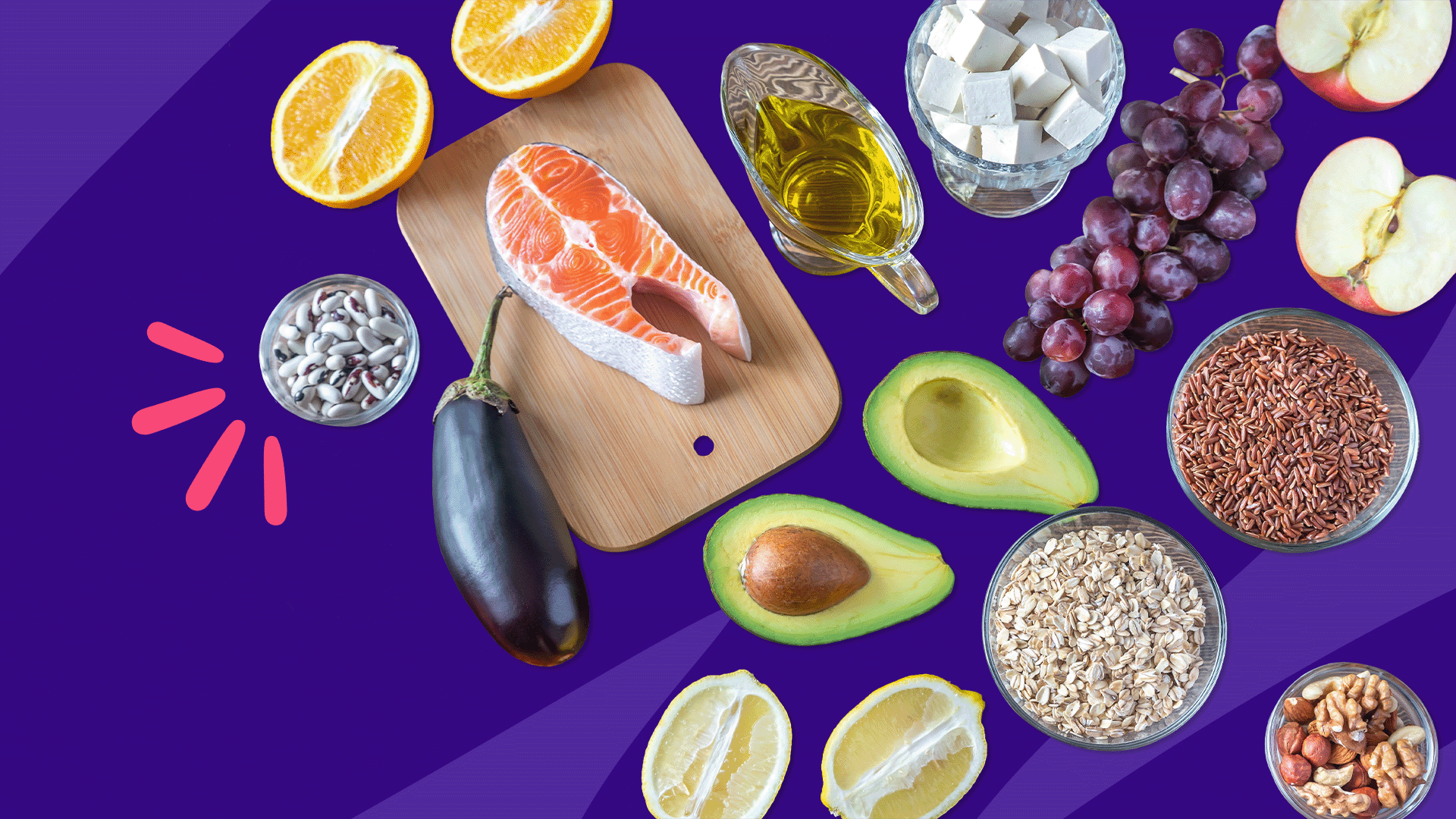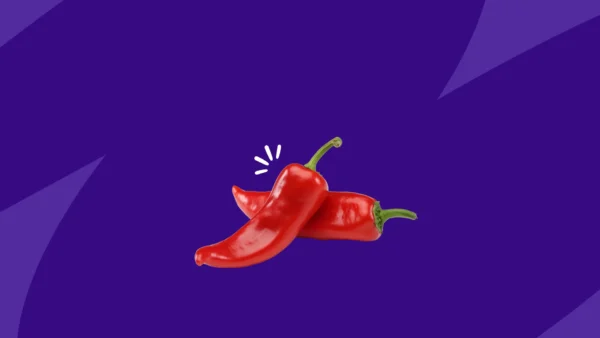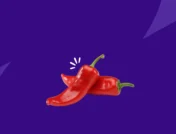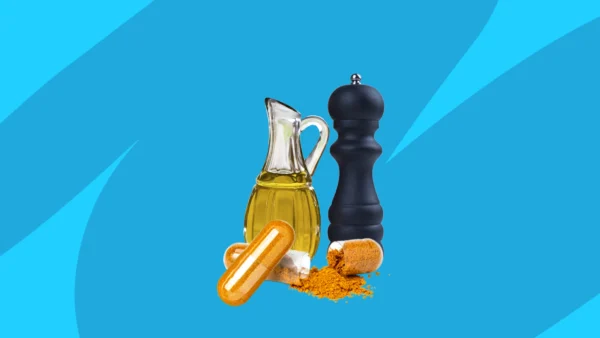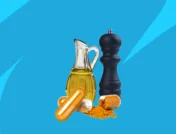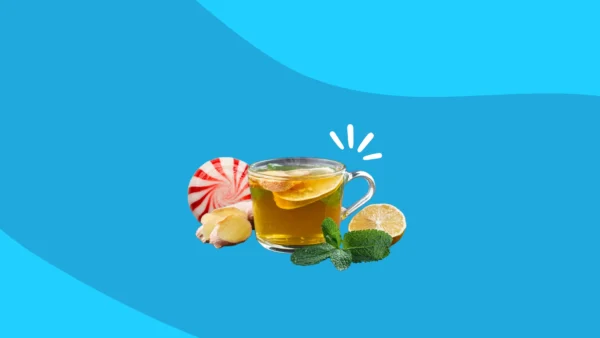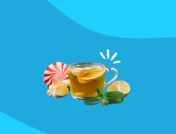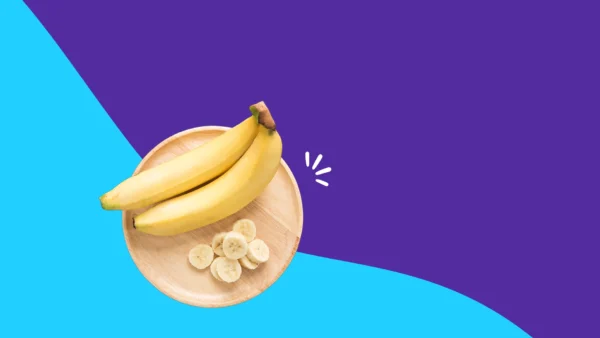Pockets are all the rage in fashion these days, but pockets in your colon can cause some serious problems—namely diverticulitis, a painful medical condition that occurs when these small pockets, called diverticula, become inflamed or infected.
To be clear, many Americans (especially those older than 40) develop these small pouches in their colon wall; this is called diverticulosis or diverticular disease, and it usually isn’t a serious condition. You can have diverticula and never experience inflammation or infection, in fact, most people with diverticulosis will not experience problems. If you do, however, it’s called diverticulitis—and these acute attacks, or flare-ups, are not only painful but can be dangerous if left untreated.
Figuring out what causes diverticulitis for you, personally, is the most important thing you can do to manage your condition and avoid flare-ups…but you might not be aware yet of what your triggers are. Here are the foods generally considered safe and unsafe to eat—as well as how else you can manage your diverticulitis.
How to manage diverticulitis with diet
While newly-diagnosed people often feel overwhelmed by the limitations of a diverticulitis diet, the good news is that you don’t need to be overly restrictive with what you eat or follow a special diet. There are a few “golden rules” when it comes to choosing safe foods for diverticulitis that can make it easy to keep your stomach happy.
Know your triggers
Each person with diverticulitis needs to base their diet around their own particular circumstances, according to Kathryn A. Boling, MD, primary care provider with Mercy Personal Physicians at Lutherville in Maryland. What bothers you might not bother someone else with diverticulitis; on the flip side, you might be able to eat foods that many other people can’t.
“Across populations, studies say you don’t have to worry about what you eat [normally], but patients often say to me, ‘I know we can eat whatever we want, but I’ve noticed things like nuts or popcorn cause problems for me,’” Dr. Boling says.
FYI, Dr. Boling suffers from diverticulitis herself…and her biggest trigger is blackberries. If something triggers your symptoms, avoid eating it even if it doesn’t go against “the rules.”
Take it slow
If you’ve recently had a diverticulitis attack and are getting back to eating normally again, it’s important to ease into your usual diet. This is especially important if you don’t know what caused your flare-up; otherwise, you run the risk of eating the exact thing that triggered your symptoms in the first place. You may then have to start all over again. It is also recommended to initially eat a low fiber diet during and immediately after a bout of diverticulitis. Examples of low-fiber foods include white bread, white rice, and white potatoes. Long-term, a diet full of fiber-rich foods is recommended.
Understand how to manage attacks
“What you eat when you have an acute attack is different than what you eat when you’re better,” explains Dr. Boling, who adds that during an attack you should stay away from any hard-to-digest foods and foods that pass through your GI system quickly (such as raw veggies and roughage).
If you’re not having an attack, on the other hand, it’s okay to eat any foods you know for sure are not a trigger for you.
5 (typically safe) foods to eat
Again, this list is subjective and something here may be a trigger for you. But in general, these foods tend to be easy on the intestines of people with diverticulitis.
- Whole grain carbohydrates: If cereals and rice are tough for you to digest, try instant oatmeal, pasta or noodles, and whole grain bread, muffins, or wraps.
- Lean protein: Eggs and tender cuts of meat (think shredded chicken, baked fish, and ground beef) are usually easy to digest.
- Cooked fruits and vegetables: You may need to remove the skin if you believe it has caused irritation in the past.
- Starchy foods, like potatoes: When your diet is high in starch, it’s friendly to your colon (however you may consider peeling the potatoes first).
- Juice, tea, and water: Keep juice pulp-free so it doesn’t irritate your colon (like apple, grape, or cranberry, instead of orange).
5 foods to avoid
In the past, physicians used to recommend that patients with diverticulitis avoid all nuts, seeds, and corn products, but healthcare providers know now that those restrictions don’t need to be applied to all patients. Many people are able to eat these foods without issue.
Possibly unsafe foods to eat
You may be able to eat these foods, eat them carefully or infrequently, or eat them in small amounts—or they may pose too much of a trigger for your colon. If that’s the case, you’re in good company; these are the foods that could potentially cause a diverticulitis flare-up.
- Hard-to-chew foods: Hard foods that are difficult to break down are more likely to get trapped in the pockets of your colon.
- Medium-sized seeds or nuts: Sunflower seeds, for example, may be difficult on your digestion; strawberries seeds usually aren’t (though they could still bother you!).
- Popcorn and corn on the cob: Because you tend to eat these foods quickly—rather than taking time to fully chew them—they are more likely to cause issues.
- Red meat: Some studies suggest red meat can contribute to diverticulitis flares; one from 2018, published in Gut, showed an increase in attacks for men who consumed more red meat than other types of protein, like poultry and fish.
- High-FODMAP foods: Some experts think following a low FODMAP diet can reduce the amount of pressure in the colon and limit the number of acute attacks a person with diverticulitis might have.
Are alcohol and coffee bad for diverticulitis?
Not necessarily, though you definitely want to avoid alcohol and caffeine if you’re experiencing a diverticulitis attack.
“Coffee is a bowel stimulant, so if you’re having an attack you might want to stay away and rest your bowel,” says Dr. Boling, “but in the long run, people who have recovered can drink it.”
The same goes for alcohol, though Dr. Boling does warn that alcohol is hard on your stomach in general—and symptoms of other health conditions, like pancreatitis, can be similar to symptoms of a diverticulitis flare (making it hard to know if you’re treating your symptoms appropriately).
Diet for diverticulitis flare-ups
If you’re experiencing an acute diverticulitis attack and want to rest your bowel so it can recover faster, you might want to go on a clear liquid diet for one to two days, advises Dr. Boling. This means you can consume clear liquids of all kinds, including chicken broth, water or ice chips, Gatorade, no-pulp juice, herbal tea, or even Jell-O (since it’s digested as a liquid).
In other words, if you can see through it, you can eat or drink it, says Dr. Boling—and this type of short-term diet can be used to recover from an acute attack, to preempt an oncoming attack (when you start to feel symptoms), and even alongside antibiotics, should your healthcare provider prescribe them.
Symptoms of a diverticulitis flare-up include:
- Pain, often on your lower left side
- Nausea and vomiting
- Cramping and bloating
- Fever
- Diarrhea or constipation
Once the flare is under control, you can return to normal eating habits.
Other ways to keep diverticulitis under control
If you’ve done everything you can to identify your triggers and keep your symptoms under control, but are still living with flare-ups, you may be able to adopt a few lifestyle changes to control your diverticulitis. These can be done in addition to modifying your diet for diverticulitis.
Taking probiotics
Experts are still researching the effect of probiotics (or “good bacteria”) on diverticulitis, but what they’ve seen so far suggests it can be helpful for many patients. A 2019 study from the European Review for Medical and Pharmacological Sciences suggests that, when used with antibiotics, probiotics may help reduce the amount of abdominal pain during acute attacks.
Another review of studies, published in 2013 in Therapeutic Advances in Gastroenterology, is less certain that probiotics can help. However, the article does suggest that they may help, and that—at the very least—it doesn’t hurt to try.
Exercising
It’s long been known that frequent physical activity can prevent diverticulitis symptoms. An often-sourced study from 2009, published in the American Journal of Gastroenterology, found that vigorous activity lowered the risk of diverticulitis and GI bleeding.
However, that study did specify vigorous exercise, so walking may not be quite enough to reap the health benefits. Light and moderate forms of exercise didn’t show the same results.
Taking vitamins or supplements
Fiber supplements are powerful for managing symptoms of diverticulitis, largely because it keeps stool moving through the colon. “If you keep stool soft, you can prevent the clogging of the diverticula,” explains Ashkan Farhadi, MD, a gastroenterologist at MemorialCare Orange Coast Medical Center in California. “In general, if you can manage to avoid constipation, it may prevent flare-ups.” A high-fiber diet—as long as it includes high-fiber foods that don’t irritate your system—can also be beneficial.
He also suggests taking magnesium, which can strengthen the intestinal muscles and keep stools soft and regular. It’s been shown, says Dr. Farhadi, that foods rich in magnesium can prevent the progression of diverticulosis—but be aware that some of these foods are nuts, and you may be limited in eating them if they’re a trigger food for you.
As far as other vitamins, some patients with diverticulitis wonder about vitamin D. Some studies have shown that people with higher vitamin D levels are less likely to develop diverticulitis. However, there’s not much research here, and a 2020 controlled trial looking at the link found no difference among diverticulitis hospitalizations between people who supplemented with vitamin D and those who didn’t.
Taking medications
In more moderate to severe cases, your physician may prescribe an antibiotic to clear the infection. Some patients are also prescribed these antibiotics at the start of a flare, to prevent worsening of symptoms.
Whether this is the right choice for you is between you and your healthcare provider. Many physicians will prescribe something like ciprofloxacin or amoxicillin-clavulanic, but make sure, whatever you’re prescribed, that you tell your provider about other medicine you’re taking so you can avoid any interactions.
RELATED: Diverticulitis treatment and medications
Can you reverse diverticulitis?
You can recover fully from diverticulitis and not suffer acute attacks in the future with the right combination of diet and lifestyle choices. It may take as little as a few days or as long as a few weeks to heal and go back to “normal.”
In the meantime, follow a clear liquid diet when needed to rest your bowel. Anecdotally, some people recommend lying on your left side during a flare, since this position may aid digestion.
Having one diverticulitis attack only increases your chances of having a second attack by 20%, says Dr. Farhadi—but after a second attack, your risk increases to 50%. However, he adds that providers now typically wait to discuss performing any kind of surgery until after a patient has had a minimum of three attacks. However, a single, severe bout of diverticulitis (such as with an accompanying abscess), may require surgical intervention
When to see your doctor
If you’re experiencing an acute attack, you can try resting your bowel with a clear liquid diet for one to two days, says Dr. Boling, but if you’re still having pain after that you should call your healthcare provider.
Don’t ignore your symptoms or brush them off as “just diverticulitis,” she notes. You may need antibiotics, IV hydration, or even hospitalization to feel better. In worst case scenarios, diverticulitis can become fatal if left untreated (thanks to the risk of a perforated bowel and sepsis).
Sources
- Nutrition and Healthy Eating, The Mayo Clinic (2021)
- Meat intake and risk of diverticulitis among men, Gut (2018)
- Logical hypothesis: Low FODMAP diet to prevent diverticulitis, World Journal of Gastrointestinal Pharmacology and Therapeutics (2016)
- The efficacy of a mix of three probiotic strains in reducing abdominal pain and inflammatory biomarkers in acute uncomplicated diverticulitis, European Review for Medical and Pharmacological Sciences (2019)
- New strategies for the management of diverticular disease: insights for the clinician, Therapeutic Advances in Gastroenterology (2013)
- Physical activity decreases diverticular complications, American Journal of Gastroenterology (2009)
- Higher Serum Levels of Vitamin D are Associated with Reduced Risk of Diverticulitis, Clinical Gastroenterology and Hepatology (2013)
- Effect of monthly vitamin D on diverticular disease hospitalization: Post-hoc analysis of a randomized controlled trial, Clinical Nutrition (2021)



